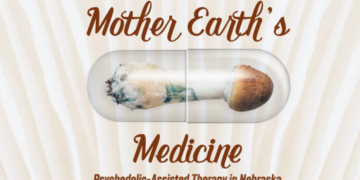Omaha in 1991 was a different city than it is today. The population was 362,000, compared to the population of 468,262 in 2019. The riverfront was heavily industrial, as railroad yards and the Asarco lead refinery–at one time the world’s largest lead refinery–occupied the area. The Heartland of America Park had opened the year before, but the public needed to know it was for them.
Mike Mancuso, president of Mid-America Expositions, had an idea to help with recognition of this park. He continuously looks at what cities the size of Omaha are doing for events, and one up-and-coming event in particular—a showcase of local cuisines—caught his eye.
Several cities were producing a “Taste of the City.” Mancuso thought the time was right for a “Taste of Omaha,” as this was a city that knew its food.
“Omaha’s interesting. We have more full-menu restaurants than any other city in the nation,” said Hal Daub, former mayor and senior counsel at Husch Blackwell. “We were a test market for a lot of restaurants.”
First, however, Mancuso had to get through some road blocks. It was the effort of a large group that helped bring Mancuso’s idea for an outdoor festival to the riverfront. Mayor Daub was interested in having a large-scale event come to the riverfront and his chief of staff was willing to help in any way to bring this event together.
“[Mancuso] wanted to know if we could commit a park and commit to closing that park for a weekend so a commercial opportunity could exist,” Daub said. “This idea was pioneering—that we could bring together the restaurants, especially the great variety that our restaurants [offer], in a public space. We put those resources together.”
Roads were built to get people to the riverfront. City government supplied law enforcement and public property.
“We had to bring in power, and parking was—interesting,” Mancuso said. “At that time, Asarco was there.”
“One of the big things was to make sure we had the ability to get in and out with parking,” Daub said. “We didn’t have Riverfront Drive or Gallup at that point…We gave them the public safety necessary in order to navigate the streets.”
Much of the land that needed to be crossed to get to the riverfront was owned by Union Pacific. Mancuso and his staff wrote a certificate of insurance to assure UP that this was a legitimate, family-friendly event. Fences barring people from getting to the riverfront were taken down.
The result of the 1998 event was a successful summertime celebration that showed the riverfront as a place to be, Omaha as a place to taste, and Mid-America Expositions as a premier event planner. It also helped the city with one of its goals.
“Part of our problem back in those days was we were losing our young people,” Daub said. “So making this a more fun place was a priority to help keep them.”
As the city has evolved, so has this mainstay of summer. This year’s event will be held in a different location due to the renovation of the riverfront area and Gene Leahy Mall.
“It is tough to create that same atmosphere,” Mancuso said. “We’re looking at Elmwood Park.”
The thought process behind using Elmwood includes several similar elements as that of the riverfront. It’s a public space that has a good area for parking—they are looking at a shuttle from UNO’s south campus near Aksarben.
Daub said Mancuso’s 1990s idea of bringing the city together for a fun outdoor event has led to the idea of Omaha having other large-scale events such as the International Omaha, Olympic Swim Trials, and more.
“You have to give the Mancusos a lot of credit, because they were pioneers,” Daub said.
r
Visit showofficeonline.com for more information.
rThis article was printed in the February/March 2020 edition of B2B. To receive the magazine, click here to subscribe.












